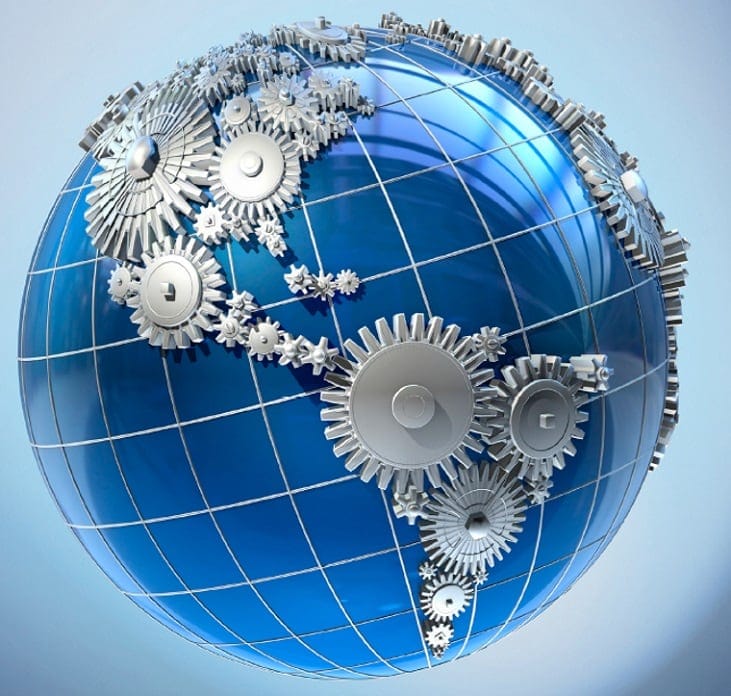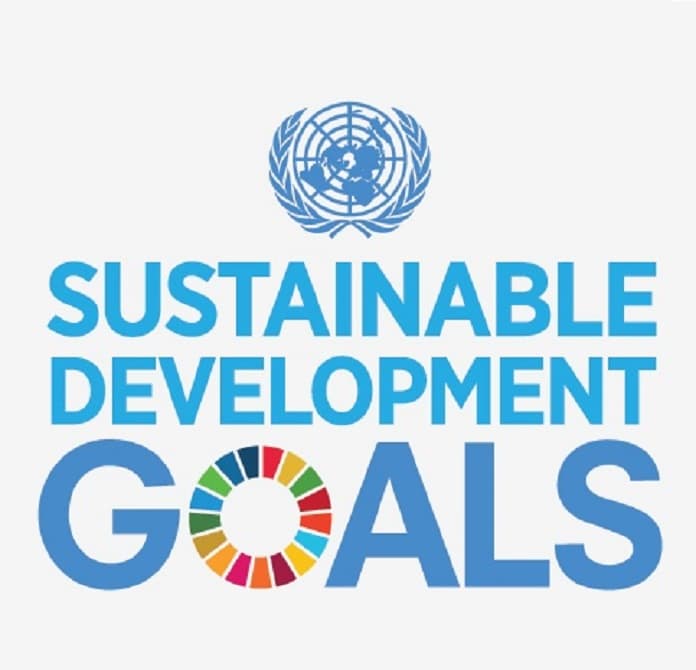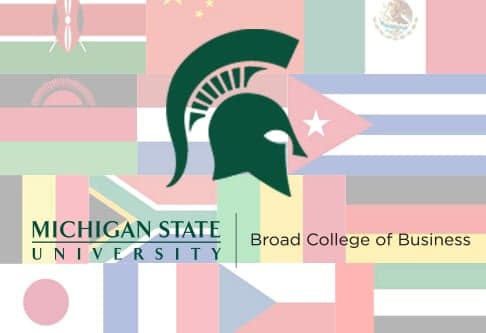International production, strategic global investments, and the infrastructure design of global supply chains are all a function of driving satisfaction among a company’s customers (and perhaps some can argue satisfaction among a country’s citizens). On October 26, 2018, I am giving a talk (ppt slides) at the World Investment Forum in a session titled “Explaining today’s global investment and international production trends.”
globalEDGE Blog - By Author: Tomas Hult
Publish Date:
The International Business Center in Michigan State University’s Broad College of Business is delighted to announce that the Center has been awarded a grant by the U.S. Department of Education to continue to operate a Center for International Business Education and Research (CIBER). MSU is the only university in Michigan, one of three in the Big Ten, and one of only 15 universities in the country given this privilege.
As the nation’s pioneer land-grant university, MSU has been a leader in international education and outreach since 1855. With a focus on quality, inclusiveness, and connectivity, Michigan State University has engaged in a strategic and transformative journey to become the model land-grant university for the 21st century. We call our destination world-grant and focus on being locally relevant and globally engaged.
Through grant and matching funds, the $3.3 million project for 2018-2022 is titled “Strategic and Sustainable Value Chains for Increased International Competitiveness.” This value chain perspective provides CIBER with a perfect role within the Broad College of Business and on the Michigan State campus.
Publish Date:
This globalEDGE Blog post is also shared as an opinion segment on the globalEDGE Business Beat on the Michigan Business Network (a radio show hosted by Tomas Hult).
The first two Regional Trade Agreements (RTAs) that existed in the world according to the World Trade Organization’s database on RTAs were the EC Treaty (what has now become known as the European Union), which started in 1958, and the European Free Trade Association (EFTA), which started in 1960. Today, some 60 years later, we have 299 RTAs in force (predicted to be about 308 RTAs by the end of 2018).
Complementing RTAs in the world are Bilateral Trade Agreements (BTAs) between any two of the world’s countries. These BTAs are more difficult to count exactly due to what can be considered an active agreement and what is considered a country. Given that we have 193 country members of the United Nations along with two so-called UN observers (Holy See/Vatican and Palestine) along with Taiwan and Kosovo (and 61 dependent and 6 disputed territories), the options are almost endless for potential bilateral agreements.
Including both RTAs and BTAs, the United States is engaging formally in 14 active trade agreements. The countries included in these 14 agreements are Australia, Bahrain, Canada, Chile, Colombia, Costa Rica, Dominican Republic, El Salvador, Guatemala, Honduras, Israel, Jordan, Korea, Mexico, Morocco, Nicaragua, Oman, Panama, Peru, and Singapore. The first agreement that the U.S. entered into was with Israel in 1985, with Israel now being the 24th largest trading partner with the U.S. (amounting to about $50 billion annually).
Publish Date:
Countries, companies, and customers are increasingly concerned with sustainability. What is unclear from a business perspective, however, is how much cost can be tolerated for sustainability efforts and what markets’ sensitivities are to product prices? The results of a large-scale study that I undertook with colleagues (article) indicate that product-market performance can be achieved even when costs/prices increase by 27 to 72%, and when companies implement sustainability efforts that are 5 to 30% above sustainability efforts of the company’s home country.
Publish Date:
The top-selling International Marketing textbook defines international marketing as “the performance of business activities designed to plan, price, promote, and direct the flow of a company’s goods and services to consumers or users in more than one nation for a profit.” The argument is that “more than one nation” is what separates domestic from international marketing. We can also argue that “for a profit” is a constraining qualifier since the United Nation’s Sustainable Development Goals, non-profit organizations, and philanthropic organizations – to name a few categories – also use “international marketing” tools, skills, and knowledge to cross country borders with their activities.
But that’s not the focus of this blog! Instead, let’s use the definition of international marketing as a general guide to the topic. What I do want to focus on is Michigan State University’s influence on international marketing scholarship. For about half a century, MSU’s Broad College of Business has been a leader in international marketing scholarship – research, teaching, services, and outreach. MSU has some 1,400 faculty conducting research, teaching, service, and outreach in 176 countries – and a number of these professors are entrenched in international marketing scholarship. Ultimately, research rankings drive the prestige and reputation of an academic institution such as Michigan State University.
Publish Date:
China remains the market with the most potential for U.S. exporters, according to the 2018 Market Potential Index (MPI) by the International Business Center in the Broad College of Business at Michigan State University. Hong Kong and India are second and third in this year’s ranking.
The top three spots in the 2018 ranking remain unchanged from the 2017 rankings, with China keeping the overall top spot for the fifth year in a row. Singapore moved up from the sixth spot into the fourth spot on the strength of its strong commercial infrastructure and high levels of market receptivity.
Publish Date:
International trade and policy experts have made strong arguments that the worldwide economic downturn a decade ago (2008-2009) was due to the inadequacies in the rules that we need to have globally for a stable and prosperous economy. The carryover effect to today, some 10 years later, is potentially worrisome in the long term, some economists suggest.
Publish Date:
By some accounts, moving is ranked as the third-most stressful event a person can experience, after death of a relative and divorce. Two Men and a Truck started as an after-school business (Video: The Story of the Stickmen) for two high school boys in Lansing, Michigan. As a small business focused on local moving services, the company began in 1985 with $350, a hand-drawn logo, and an advertisement in a local community newspaper.
In 1989, Melanie Bergeron, the daughter of founder Mary Ellen Sheets, opened the first franchised office of Two Men and a Truck in her hometown of Atlanta, Georgia. Melanie is now board chair, with Brig Sorber as the chief executive officer and Jon Sorber as executive vice president. Randy Shacka, who joined the company as an intern in 2001, was promoted in 2012 to president, and Brant Hartle is the Chief Financial Officer. Shacka is the first president of the company who did not come from the family.
Two Men and a Truck is no longer “two men and a truck.” The company has grown both domestically and internationally to most of the United States and some 380 locations worldwide.
Publish Date:
Second Shift captures the dynamic, collaborative management model that essentially saved a U.S. manufacturing city - Lansing, Michigan. The "Second Shift Model" has now been codified in a book and a documentary.
When car-making giant General Motors decided to close its plant in Lansing, Michigan, in 1996, one person – the city’s newly elected mayor, David Hollister – stood up and said “no.” Hollister’s “no” began a five-year competitive, collaborative, strategically intricate process to keep GM in town.
Publish Date:
[This blog is based on the Article Snapshot for my article with Michael Giebelhausen, HaeEun Helen Chun, and J. Joseph Cronin Jr. in the Journal of Marketing, July 2016. A six-minute radio dialogue between Michael Giebelhausen and Tomas Hult about the article is on the globalEDGE Business Beat]
Consumers experience a "warm glow" and heightened service satisfaction when they participate in a provider's voluntary green program (and vice versa), an effect that can be dampened or heightened depending on how participation is incentivized.
Publish Date:
[This blog is based on the Article Snapshot for my article with Constantine S. Katsikeas, Neil A. Morgan, and Leonidas C. Leonidou in the Journal of Marketing, March 2016. A six-minute radio dialogue between Neil Morgan and Tomas Hult about the article is on the globalEDGE Business Beat]
An assessment of performance outcome measures in marketing reveals significant problems with how such outcomes are conceptualized and operationalized and performance areas in which empirical knowledge of marketing's impact is limited.
Publish Date:
[This blog post is based on a presentation I gave in a business-academic panel “jam session” at the American Marketing Association Summer Educators’ Conference, August 6, 2016. The slides with charts and data can be downloaded here].
The strategic importance placed on leveraging global supply chains has seen an exponential increase in the last decade. The world is now connected in a cogwheel fashion, where all 195 countries leverage inbound and outbound elements of global supply chains, and what happens in one part of the world – seemingly far away from where you are – oftentimes has an effect on what you do, perhaps even as a bullwhip effect; that is, small changes in some parts of the world has large cause-effect relationships with other parts.
Tremendous inbound and outbound growth in supply chain traffic has been seen in Asia, with lots more inbound in the last decade than ever before. But, the idea of “supply chain management” is still driven by the U.S. and to some degree Europe. These global supply chains are important given that customers expect the world to become more globalized than the companies expect to have to deliver in the next 20 years. This mismatch needs to be solved.
Publish Date:
“Girl power” was made popular by the pop group Spice Girls in the mid-to-late 1990s. The phrase is typically used as a reference to female empowerment and independence, and has also been linked to modern-day feminism. The “girl power” phrase came in vogue in 1987 in a song by London-based all-girl group Mint Juleps and their “Girl to the Power of 6.” The pop-punk due Shampoo also had a single titled Girl Power in 1995. But, Spice Girls, without a doubt, set the phrase on fire in the mid-to-late 1990s.
Publish Date:
The USA, more than most other countries, has been reluctant to engage in trade agreements. As a backdrop, the US-Israel Trade Agreement is the oldest agreement involving the US and it went into effect on September 1, 1985. Since then, the US has signed 13 more trade agreements, covering 20 countries in total with the Israeli agreement (with 18 more agreements being deliberated).
But, during the same 30-year period the world has seen 256 new trade agreements involving a large portion of the world, as registered with the World Trade Organization (see my article in The Conversation). Nineteen trade agreements were in force worldwide in 1985. Now there are 275, with 132 agreements being implemented in the last decade. The bottom line is that the US is very reluctant to engage in almost any form of trade agreement compared with the rest of the world.
Publish Date:
Having lived in the United States since 1987, off and on, and then becoming a U.S citizen in 2004 after Sweden allowed dual citizenship starting in 2001, I’ve become entrenched in the “American” culture and way of live. I’m happy to live in the United States; it’s a great country with great opportunities, but it is not America!
America consists of 55 countries and territories, including of course the United States of America. The U.S.A. is the largest of the 55 entities, with more than 320 million people, followed by Brazil with about 205 million, Mexico with about 121 million, and then the population figures drop below 50 million for all other countries and territories. Colombia, Argentina, Canada, Peru, Venezuela, Chile, and Ecuador - in that order – are in the top 10 most populous countries in America as well. These top 10 most populous countries in America make up about 88 percent of the total population of some 982 billion people in the region which, by continent, includes North America and South America.
Publish Date:
As someone who played tennis at a high-level from kindergarten into my 20s (plus engaged competitively in other sports), I have always believed my drive to do well vis-à-vis the competition (versus others and versus my own past accomplishments), in anything I set out to do, is rooted in a values-structure tracing to my competitive tennis days. Some even argue that tennis players make the best employees! Now, this is not about tennis; it’s about former athletes being global leaders.
But this is not any athlete. Most people play sports as a part of their upbringing. If you are like me, I had my children try out a bunch of different sports to see what they liked, didn’t like, and what could diversify their mindsets. This recreational, low-level sports engagement makes for well-rounded individuals, I believe, but doesn’t make them leaders per se. High-level sports, at least college sports or equivalent, and preferably some kind of professional level where you can at least make some money, is what sets the tone for global leadership.
Publish Date:
Somewhat provocatively, let's pose the question: Are good dictators better for a country (and the world) than bad elected presidents?
Traveling the world, mainly for business-related reasons, has gotten me thinking about country governments, infrastructure-building, and the world community. The United Nations has 193 members, which means almost all countries in the world are UN members (54 countries or territories, recognized as such, are not, including notable exceptions such as Taiwan, Kosovo, Vatican City, and Palestine).
On my most recent trip to Kenya and the meetings of the United Nations Conference on Trade and Development (UNCTAD) and the World Investment Forum, there was a plethora of countries represented and numerous high-level officials. And, since the meeting was in Africa, most of the 55 countries in Africa and its 1.2 billion people were represented by officials. Africa has seen its share of “dictators” and elected leaders, and that begs the question of which is the best – it seems the answer should be easy, but is it?
Publish Date:
This blog was written using a wealth of materials promoted by the United Nations, UNCTAD, and various UN Forums, such as the World Investment Forum, but with my take on the implications and where to go from here. This inclusion of official, publicly available UN materials sets the tone for the debate about UN’s Sustainable Development Goals (SDGs), the 2030 Agenda, funding and bold leadership required, and the worldwide collaboration needed by the UN’s 193 member states. My take is that collaboration – whether it be structured as a series of multilateral agreements and/or regional agreements – is the way to go over any form of isolationism.
Publish Date:
Ok, so normally my globalEDGE blogs are a bit more topical, serious, and germane to my international business and trade interests. But I’m finding myself up early, from jetlag, in my hotel room in Nairobi, Kenya where I am attending the joint meeting of UNCTAD and the World Investment Forum, and it strikes me that cocoa beans have been in the news lately. And the world may not have noticed!
Let’s connect the dots. Kenya is of course in Africa, and Africa accounts for 73 percent of the world’s cocoa bean production according to a 2016 report by UNCTAD (but only 19 percent of the cocoa bean roasting/grinding/refinement which is done mainly in other parts of the world, led by Europe at 39 percent). In Africa, Ghana and Cote d’Ivoire lead the way – each country has about 30 percent of their export earnings coming from the cocoa bean commodity. And therein lies the crux perhaps; that cocoa beans are viewed as a commodity.
Publish Date:
Nairobi, Kenya is the scene for the 2016 World Investment Forum and also the United Nations Conference on Trade and Development (UNCTAD). The parallel, and in some cases joint, meetings attract a plethora of intellectual power, decision-making authorities, and other invited and influential parties. A key agenda item across the meetings is investment opportunities based on the newly established Sustainable Development Goals.
Publish Date:
This blog is about Second Shift: The Inside Story of the Keep GM Movement, a business trade book coauthored by Tomas Hult, Director of Michigan State University’s International Business Center, which is the developer of globalEDGE. The book was coauthored with David Hollister, Ray Tadgerson, and David Closs, and published by McGraw Hill Professional in 2016.
The Second Shift Model discussed in the book was “the dynamic, collaborative management model that saved a U.S. manufacturing city." When car-making giant General Motors decided to close its plant in Lansing, Michigan, in 1996, one person—the city’s newly elected mayor—stood up and said “no.” Initially, it was the cry of a man in the wilderness. Not once in its century-long history had GM reversed a decision to close a plant. But Mayor David Hollister quietly went to work building the ”Lansing Works! Keep GM!” movement and succeeded in defying all the odds.
Publish Date:
Theresa May became Prime Minister of the United Kingdom on July 13, 2016, after David Cameron stepped down as the leader of the Conservative Party following UK’s June 23, 2016 referendum on European Union membership. The UK population voted for BREXIT, and the formal UK exit from the EU will start when Article 50 of the Treaty of the European Union is triggered by the UK.
The United Kingdom is predicted to file paperwork to trigger Article 50 within six to nine months from the June 23, 2016 vote, although many expect the UK to drag it out as long as possible to potentially negotiate or at least discuss options for UK to be as favorable as, at this time, conceivable. This is where Angela Merkel comes in.
Publish Date:
Companies’ supply chains should be strategic, analytical, total value systems that are focused on bottom-line profit. The days when supply chains were an operational activity to get a truck from point A to point B are long gone. The leverage that supply chains need to give companies and, by extension, customers is telling.
Nowadays, depending on where you live, some 70 to 90 percent of what we buy for regular consumption and use are not made in our local area. And supply chains are increasingly becoming more strategic; companies leveraged supply chains for 17 percent of their strategy in 2005 and now that number is 21 percent.
Publish Date:
China devalued its yuan in 2015 by calculating the reference rate on a daily basis and letting market forces affect the value. For some, it seemed like a good idea to get China more into the dynamic financial market. For others, it’s not playing out that way.
With the Iran nuclear deal and US sanctions lifted, Iran’s market – read oil production and related industries – should open up to companies. Not really. There is just too much bad feeling and economic turmoil for some to engage.
While the cases of China and Iran involved decisions being made (by China and by the US vis-à-vis Iran), TPP has been in negotiation since March 15, 2010 without an agreement. TPP, often talked about, seldom spelled out, refers to the “Trans-Pacific Partnership” and involves 12 primary countries as potential trading partners. Nineteen official negotiation rounds between 2010 and 2013 and numerous other meetings since led simply to indecisiveness.
Publish Date:
International trade has become a negative phenomenon in the US election cycle in 2016 as well as influenced the BREXIT. Last year, on October 5, 2015, US President Obama used the “fast track powers” granted to him by Congress to seal the Trans-Pacific Partnership agreement. TPP involves the US and 11 Pacific nations that encompass 40% of global trade (Australia, Brunei, Canada, Chile, Japan, Malaysia, Mexico, New Zealand, Peru, Singapore, US, and Vietnam).
But is US trade a lost cause and is the signing of TPP too late to be helpful for US trade? The US share of the Asia-Pacific region’s imports declined about 43% from 2000 to 2010. Gaining that back would mean an additional $600 billion annually by 2020, supporting some 3 million US jobs. Now, other countries are exporting much more to these countries, and at an increasing rate. Why is that?










